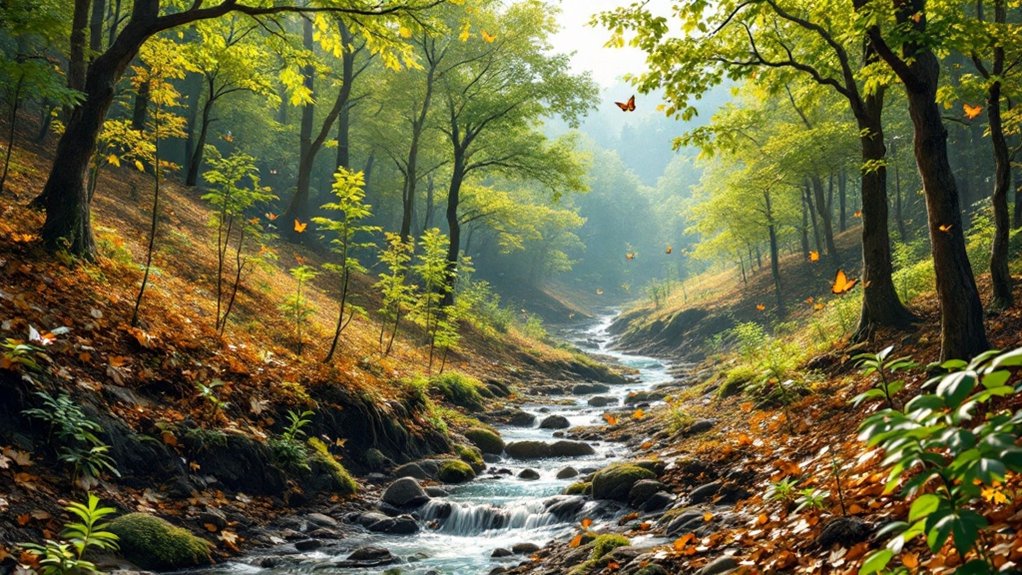Reforestation packs a serious environmental punch. Trees absorb massive amounts of CO2 through photosynthesis, with tropical forests alone storing 40% of Earth’s carbon. They’re basically nature’s air purifiers, filtering pollutants while providing luxury condos for wildlife – housing 80% of land species. Trees also work as natural plumbing systems, preventing floods and cleaning water sources. Their roots grip soil like guardians, preventing erosion. The deeper you go, the more these wooden warriors reveal their superpowers.

Nearly every environmental challenge we face today has one surprisingly simple solution: planting more trees. Reforestation isn’t just about making things look pretty – it’s a powerful weapon against climate change. Trees are nature’s vacuum cleaners, sucking up a whopping 2.4 billion metric tons of CO2 annually through photosynthesis. Tropical forests alone store up to 40% of the world’s carbon. Take that, greenhouse gases. Successful reforestation requires careful site preparation for new trees to thrive.
Trees aren’t just pretty – they’re our best defense against climate change, absorbing billions of tons of CO2 each year.
But trees aren’t one-trick ponies. They’re literally keeping the planet’s wildlife homeless crisis at bay, providing shelter for 80% of land-based species. When we plant trees, we’re fundamentally building luxury condos for endangered species. The more diverse the forest, the more resilient the ecosystem becomes. It’s like nature’s version of strength in numbers.
Water management? Trees have got that covered too. Their roots act like natural plumbing systems, improving water retention and preventing floods. They’re basically Earth’s water filters, cleaning pollutants from our water sources and maintaining healthy watersheds. Natural disaster prevention is enhanced through reforestation by stabilizing slopes and reducing landslide risks.
And let’s talk about soil – trees are the ultimate soil guardians. Their roots hold everything together, preventing erosion while their fallen leaves create a natural fertilizer factory underground.
In cities, trees are working overtime. They’re filtering out air pollutants, absorbing nasty nitrogen oxides, and pumping out fresh oxygen. They’re also fighting the urban heat island effect, making our concrete jungles a bit less jungle-like regarding temperature. Who needs expensive air purifiers when you’ve got trees doing the job for free?
The benefits keep stacking up. Trees help stabilize global temperatures through transpiration and influence rainfall patterns. They’re also sustainable resource powerhouses, providing everything from timber to medicine. The total cost to restore our planet’s forests through strategic reforestation practices is approximately $33 billion.
And here’s the kicker – they support local economies through eco-tourism and provide non-timber forest products. It’s almost like nature designed the perfect multi-purpose tool, and we’re just beginning to appreciate its full potential.








